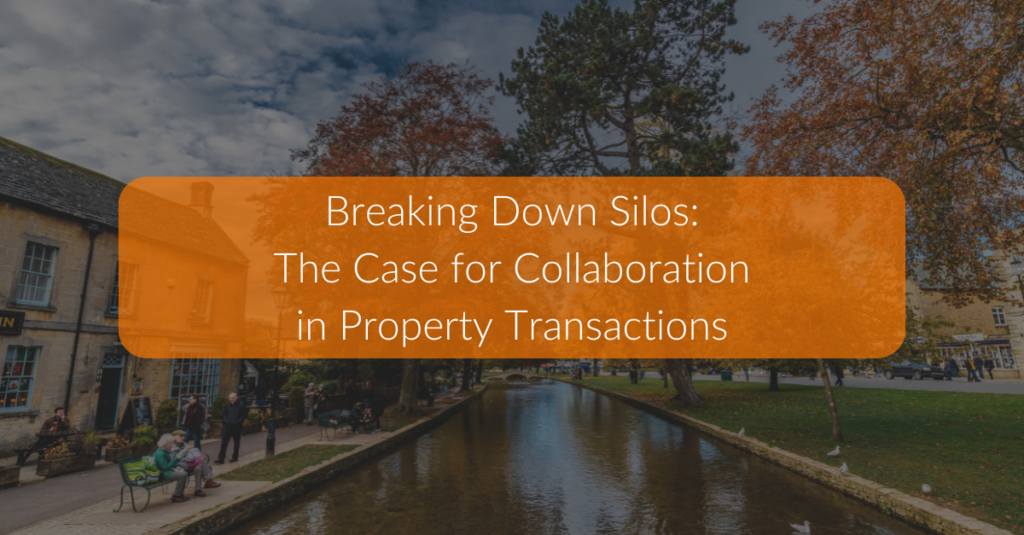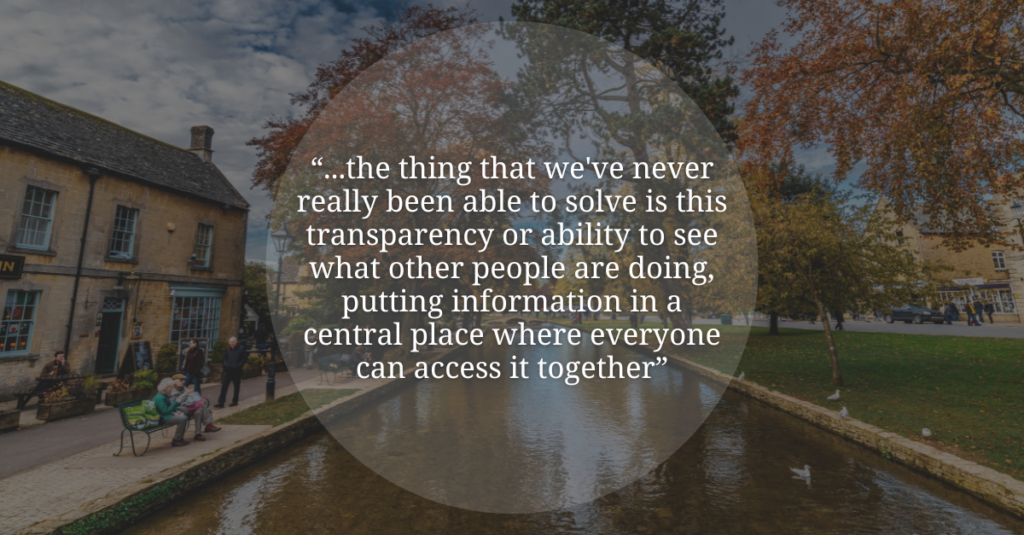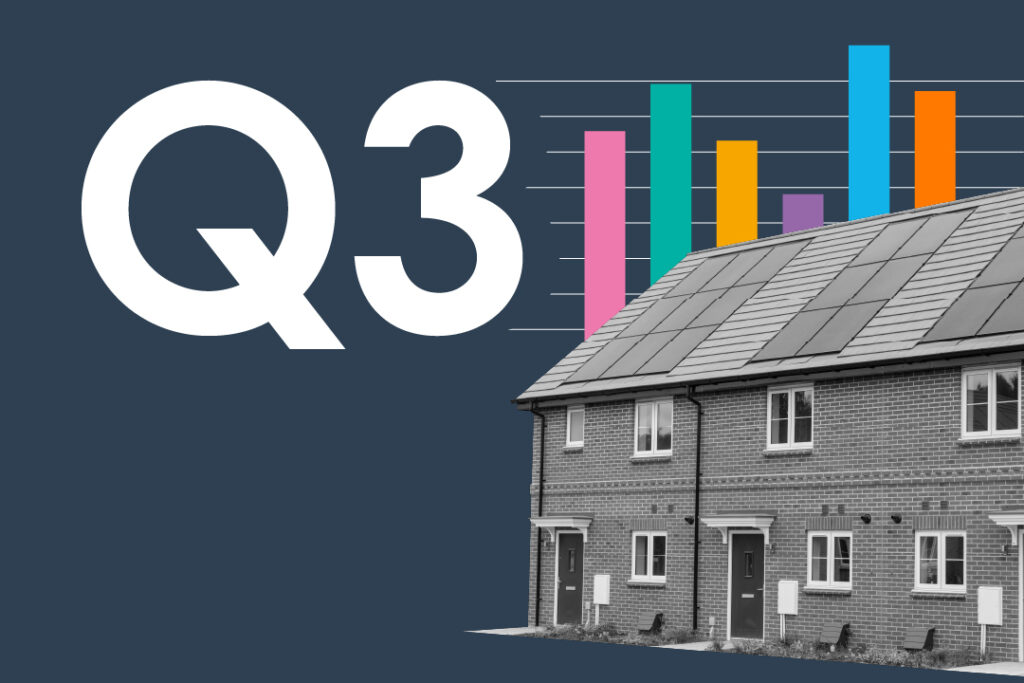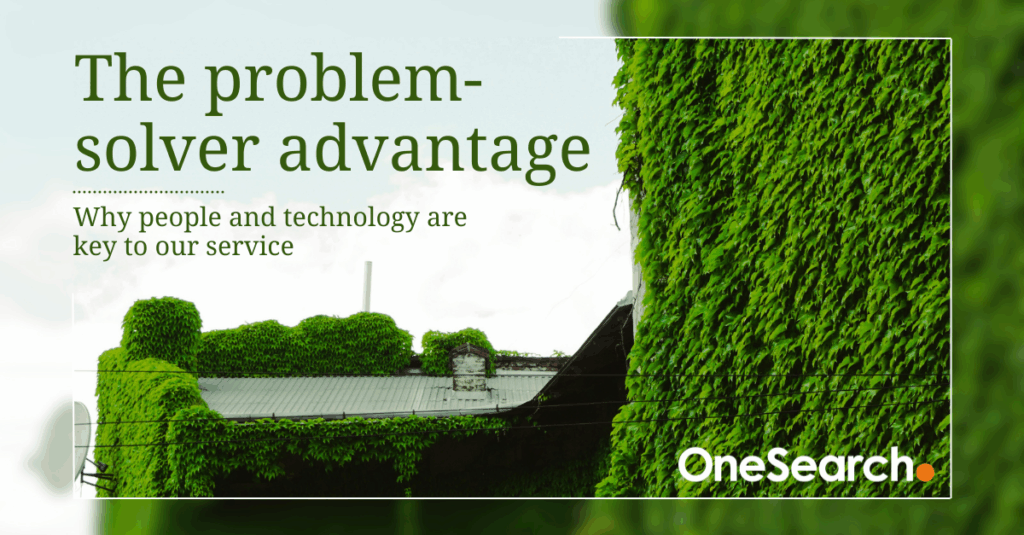
The property transaction process is a complex jigsaw puzzle involving multiple pieces – conveyancers, estate agents, lenders, surveyors, and, of course, the buyers and sellers themselves. Typically, these groups have often operated in silos, with communication barriers and information gaps hindering efficiency and causing frustration for everyone involved.
However, there’s a growing recognition that breaking down these silos and fostering a collaborative approach is crucial for streamlining transactions, reducing stress, and improving the overall experience for all involved. When asked what would make the biggest positive impact to their productivity and business success, 43% of responders to Landmark’s recent market research suggested that less chasing between stakeholders was top of their list of requests, as well as greater transactional visibility (29%).
So, what are the first steps? Understanding the issue at hand is the first jigsaw piece.
Silos: the unwavering obstacle in property transactions
There are several headaches that could potentially occur when all parties involved in a property transaction work in isolation from each other:
- Communication breakdowns: Information gets lost in translation, leading to misunderstandings, delays, and errors. Sometimes key knowledge may only be known by one person, leaving transactions susceptible to annual leave, sickness, or departures.
- Duplication of effort: Different parties may end up requesting the same information or performing the same tasks, wasting time and resources.
- Lack of transparency: Buyers and sellers may end up left in the dark about the progress of their transaction, leading to stress and frustration.
- Increased risk: Without a clear overview of the entire process, potential risks and issues may be missed or addressed too late.
Elizabeth Jarvis, Managing Director of OneSearch echoed this point in a recent industry roundtable discussion: “One of the biggest frustrations [in the industry] that is wasting time really is chasing one another through all different parts of the process.”

“I wonder why it has taken a really long time,” Elizabeth continued, “It feels like the thing that we’ve never really been able to solve is this transparency or ability to see what other people are doing, putting information in a central place where everyone can access it together instead of it being phone calls and emails.”
The recent survey highlighted these issues, with 53% of responders listing the length of time it takes to complete a transaction as the biggest frustration, with poor communication (31%) not far behind.

The Benefits of Collaboration
In contrast, a collaborative approach to property transactions offers numerous advantages:
- Streamlined communication: A centralised platform or system allows for seamless information sharing between all parties, reducing delays and preventing miscommunications.
- Increased efficiency: By working together, parties can avoid duplication of effort, optimise workflows, and accelerate the transaction process.
- Improved transparency: Clients have a clear view of the progress of their transaction, reducing stress and building trust, without too much of a bombardment of communications.
- Reduced risk: A collaborative approach allows for early identification and mitigation of potential risks, ensuring a smoother and more secure transaction.
- Enhanced client satisfaction: A more efficient, transparent, and collaborative process leads to a better overall experience for buyers and sellers.
Technology at the heart of progress
Technology plays a crucial role in facilitating collaboration in property transactions. Digital platforms and tools can:
- Create a central hub: Provide a single source of truth for all transaction-related information, accessible to all parties.
- Automate tasks: Reduce manual effort and streamline workflows, freeing up time for more valuable activities. This includes checking of potentially incomplete documents, so that time isn’t wasted when this is discovered weeks after uploading.
- Facilitate communication: Enable real-time communication and collaboration between parties, regardless of location.
- Enhance transparency: Provide clients with online access to their transaction documents and progress updates.
Rob Steadman, Sales Director within Landmark Information Group, who also participated in the roundtable, noted that future offerings from Landmark were placed to be an ideal solution.
“There’s potentially new things that [Landmark] are bringing to the market, which is harnessing the power of AI. The fact that we touch across the whole property ecosystem so that gives us a really good insight into transactions”
“We’re excited really with the position that we’re in…almost to have a vault that’s very clear, very secure.”
The Role of Conveyancers in Driving Collaboration
Conveyancers are uniquely positioned to champion collaboration in property transactions. They act as a central point of contact for various stakeholders and have a vested interest in ensuring a smooth and efficient process, such as:
- Advocate for technology adoption: Encourage the use of digital platforms and tools that facilitate collaboration.
- Promote open communication: Establish clear communication channels and protocols with other parties.
- Educate clients: Explain the benefits of a collaborative approach and encourage client participation.
- Build strong relationships: Foster trust and mutual understanding with estate agents, lenders, and other stakeholders.
Breaking down silos and fostering collaboration is not just beneficial – it’s essential. By embracing technology, improving communication, and working together, all stakeholders can contribute to a more efficient, transparent, and client-centric process.
The individuals within the conveyancing sector have a key role to play in driving this change. By championing collaboration, conveyancers can enhance their own expertise, improve client satisfaction, and contribute to a more streamlined and efficient property market.
Related Articles

Landmark residential property trends report Q3 ‘25

The heart of OneSearch: The dedicated team behind our unwavering customer service

The problem-solver advantage: Why people and technology are key to our service

The support that grows with your firm: Why evolving service matters

Climate change in the property sector: A cross-market update

Project 28: A Charter for faster, more certain property transactions

Climate change in the property sector: A cross-market update

Four Real Risks That Could Stall Your Next Transaction

Built to Thrive: OneSearch’s Three-Decade Journey in Property Data


